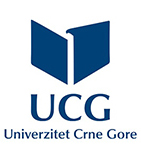| Year : |
2022 |
| Volume : |
68 |
| Issue : |
2 (30.06.2022) |
| |
|
| Authors : |
Khadijeh HAJI, Abdulvahed KHALEDI DARVISHAN, Raoof MOSTAFAZADEH |
| Title : |
IDENTIFICATION OF EROSION CRITICAL AREAS BASED ON SOIL ERODIBILITY AND TERRAIN INFLUENCE FACTORS IN THE IRANIAN PART OF THE CASPIAN SEA BASIN |
| Abstract : |
Understanding the contribution of different land uses in soil erosion leads to optimal management and conservation practices to reduce the severity of erosion and consequently, the sustainable management. Changeability of the most effective factors on soil erosion especially soil erodibility and topography in different land uses is a first step to have a general view of soil erosion in the watersheds. Therefore, the present research was carried out to study the soil erodibility (S) and terrain influence (T) factors in different land uses in the Iranian part of the Caspian Sea Basin and identification of erosion critical areas based on topography and soil erodibility factors. In order to prepare land use, S and T maps for the study area, were prepared by using satellite data of moderate resolution imaging spectroradiometer (MODIS), shuttle radar topography mission (SRTM 90m) and harmonized world soil database (HWSD) and the use of geographic information system (GIS) and remote sensing (RS), respectively. The results showed that the mean soil erodibility in the Iranian part of the Caspian Sea Basin varied from zero (soilless areas) to 0.044 (t ha hr ha-1 MJ-1 mm-1). While, among eight studied land use, the highest and lowest mean values of soil erodibility were obtained in the rangeland and permanent snow-water body equal to 0.040 and zero (t ha hr ha-1 MJ-1 mm-1), respectively. Also, the mean terrain influence (T) factor varied from 0.01 to 35.83 and shows more changeability in the study basin. As a result, by considering the high soil erodibility and terrain influence, the maximum erosion potential in the study area are located in the middle parts of the basin, where the highest slope gradients have high soil erodibility values. These areas are mainly located in the south slopes of the Alborz mountains. In this regard, defined critical regions based on topography and soil erodibility factors along with natural and anthropogenic factors can be considered in the planning of soil erosion control in watersheds and soil and water conservation programs. |
| For citation : |
Haji, K., Khaledi Darvishan, A., Mostafazadeh, R. (2022). Identification of erosion critical areas based on soil erodibility and terrain influence factors in the Iranian part of the Caspian Sea Basin. Agriculture and Forestry, 68 (2): 35-47. doi:10.17707/AgricultForest.68.2.03 |
| Keywords : |
Land use, Management practices, Satellite data, Soil erodibility, Topography |
| |
|
| download paper |

